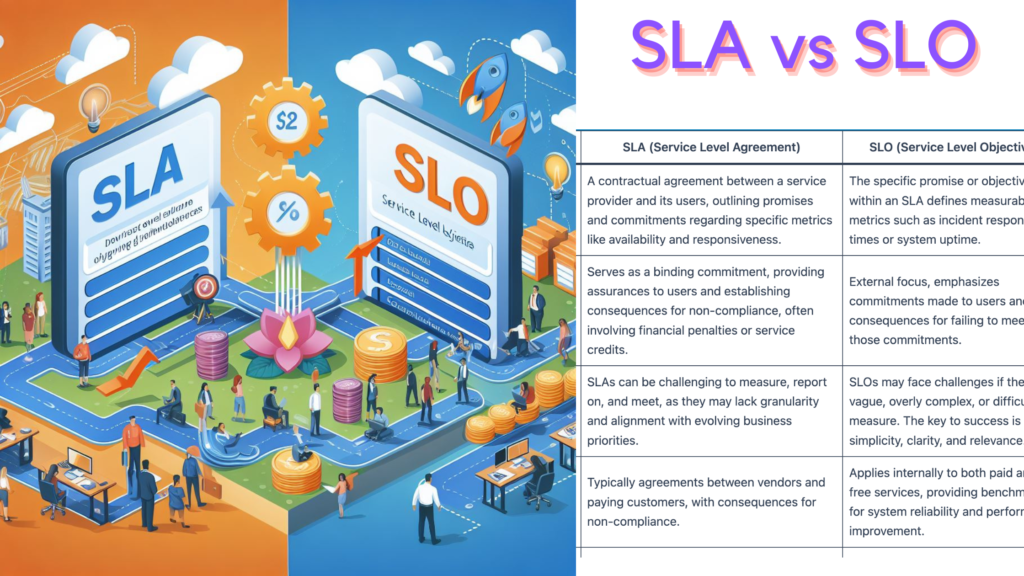Incidents are an inevitable aspect of any business operation. From minor glitches to major disruptions, incidents can have a significant impact on an organization’s performance, reputation, and overall success. To effectively navigate the complex landscape of incidents, businesses require a robust enterprise incident management (EIM) strategy. This strategy encompasses processes, solutions, and collaboration efforts aimed at identifying, resolving, and mitigating the impact of incidents while maintaining business continuity.
In this article, we will delve deep into the world of enterprise incident management. We’ll explore what incidents are, why managing them efficiently is crucial, and how an effective incident management process can be established. If you’re looking to enhance your understanding of incident management and its role in ensuring your business’s smooth operation, you’re in the right place. So, let’s dive in!
Understanding Enterprise Incident Management

Enterprise incident management involves the systematic approach of identifying, resolving, and learning from incidents that affect business operations. These incidents can range from technical glitches in software systems to security breaches that compromise sensitive data. Efficient enterprise incident management goes beyond just addressing the immediate issue; it focuses on understanding the root cause, implementing corrective actions, and preventing future occurrences.
- Over the past decade, more than 60% of Fortune 1000 companies have encountered at least one publicly-known breach. This statistic underscores the significance of implementing robust incident management practices to safeguard sensitive data and minimize the consequences of security incidents.
- Using incident management software enables organizations to have real-time visibility into the incident management process. This allows for efficient tracking of incident status and ensures timely resolution.
- Selecting the appropriate Key Performance Indicators (KPIs) and metrics is essential for monitoring and enhancing incident management over time. These measures aid teams in identifying, troubleshooting, resolving, and preventing incidents.
- Managing incidents entails identifying failure conditions, analyzing log data, and determining the specific code modules implicated in each incident. This thorough examination allows for a comprehensive understanding of the underlying causes, enabling the implementation of suitable remedial actions.
Although the exact statistics on enterprise incident management are not readily available, it is still crucial for organizations to prioritize incident management practices and allocate resources towards implementing comprehensive incident management systems. These measures are essential in promptly responding to and mitigating security incidents effectively.
How can an organization prepare for a major incident?
Step 1: Establish a Comprehensive Major Incident Management Plan To effectively handle major incidents, it’s crucial to develop a detailed plan that outlines the necessary steps. This plan should clearly define roles and responsibilities, establish communication protocols, specify escalation procedures, and provide a clear definition of what qualifies as a major incident[2][4].
Step 2: Identify Key Stakeholders During a major incident, it is crucial to identify the individuals and teams who should be kept informed and involved. This includes technical teams, management personnel, department heads, service-level business management staff, and users[2].
3. Establish Effective Communication Channels: It is crucial to establish reliable communication channels that facilitate the timely and accurate flow of information during a major incident. This can involve implementing dedicated communication tools, utilizing conference bridges, or utilizing incident management platforms[2].
Establish a clear framework for defining the severity and priority levels of incidents. This will help prioritize response efforts and allocate resources effectively [4].
Step 5: Define Roles and Responsibilities Assigning clear roles and responsibilities to team members involved in managing major incidents is crucial. This includes designating individuals for key positions such as incident managers, technical leads, communication coordinators, and any other relevant roles[4].
Step 6: Provide Training and Conduct Drills It is important to regularly train and educate your team on how to effectively manage major incidents. This includes teaching them the necessary procedures and best practices. To ensure that your plan is effective, it’s also crucial to conduct drills and simulations that test its functionality. These exercises will help identify any areas that
7. Set up a mechanism for promptly and accurately reporting significant incidents. Encourage employees to report any incidents and provide clear examples of what qualifies as a major incident[6].
Step 8: Review and Improve Continuously It’s crucial to regularly review and update the major incident management plan, incorporating lessons learned from previous incidents. By continuously improving processes, tools, and communication strategies, you can enhance your overall incident response capabilities [3].
By following these steps, organizations can enhance their preparedness to effectively respond to significant incidents, reduce their impact, and swiftly restore regular operations.
Why You Need a Comprehensive Incident Management Solution
Incidents can disrupt your business’s operations, leading to financial losses, decreased customer satisfaction, and damage to your reputation. A well-defined incident management solution ensures that when incidents occur, they are addressed promptly and effectively, minimizing their impact on your business. This, in turn, allows you to maintain operational efficiency and deliver a consistent level of service to your customers.
The Incident Management Process Unveiled
Managing incidents effectively involves a structured incident management process. This process typically includes the following steps:
- Incident Identification: The first step is to identify and categorize the incident. Is it a technical glitch, a security breach, or another type of disruption? This step helps in understanding the nature of the incident and its potential impact.
- Incident Reporting: Once identified, the incident needs to be reported to the appropriate team or personnel. Reporting should be efficient and clear, providing all necessary details about the incident.
- Incident Triage and Prioritization: Not all incidents are created equal. Some have a more significant impact on business operations than others. Triage and prioritization involve assessing the incident’s severity, impact, and urgency to determine the appropriate response.
- Incident Resolution: After assessing the incident, the next step is to resolve it. This might involve technical fixes, security measures, or other corrective actions. The goal is to restore normal operations as quickly as possible.
- Incident Communication: Throughout the incident management process, effective communication is crucial. Team members, stakeholders, and even customers should be kept informed about the incident’s status and progress toward resolution.
- Incident Analysis and Learning: Once the incident is resolved, it’s important to analyze its root cause. This analysis helps in identifying underlying issues and implementing preventive measures to avoid similar incidents in the future.
Collaborative Efforts and Effective Escalation
A successful incident management process relies on collaboration among various teams within the organization. When an incident occurs, teams need to collaborate to ensure that the right actions are taken promptly. This might involve escalating the incident to higher-level teams if it’s beyond the scope of the initial team’s expertise. Effective escalation ensures that incidents are addressed by those with the necessary skills and authority.
Leveraging Technology for Enhanced Incident Management
Modern incident management solutions leverage technology to streamline and optimize the entire process. These solutions provide a centralized platform for incident reporting, tracking, and resolution. They allow teams to efficiently collaborate, share information, and provide updates. Additionally, these solutions often offer reporting and analysis features that provide insights into incident trends, allowing organizations to proactively address potential issues.
Minimizing Risk and Maximizing Resilience
An integral aspect of effective enterprise incident management is risk reduction. By identifying and addressing incidents promptly, businesses can minimize the potential negative impact on operations, reputation, and finances. Moreover, incident management strategies that focus on continuous improvement can lead to enhanced resilience. Businesses that learn from incidents and implement corrective actions are better prepared to handle future disruptions.
Key Takeaways
- Incidents are inevitable in business operations and can have a significant impact on various aspects of an organization.
- Efficient enterprise incident management involves identifying, resolving, and learning from incidents to minimize their impact and prevent future occurrences.
- An effective incident management process includes steps such as incident identification, reporting, triage, resolution, communication, and analysis.
- Collaboration among different teams and effective escalation are essential for successful incident management.
- Modern technology solutions enhance incident management by providing centralized platforms for reporting, tracking, and analysis.
- Implementing an incident management strategy reduces risk and increases business resilience.
- Collaborating with experts can help elevate your incident management strategy and ensure its effectiveness.
Remember, incidents are opportunities for growth and improvement. By managing them effectively, you can navigate challenges with confidence and emerge stronger than before. So, embrace the world of enterprise incident management and empower your business to thrive even in the face of disruptions.
Citations:
[1] https://www.ncbi.nlm.nih.gov/pmc/articles/PMC7144093/
[3] https://orangematter.solarwinds.com/2018/08/02/how-to-plan-for-major-incidents-in-itsm/
[4] https://www.atlassian.com/incident-management/itsm/major-incident-management
[5] https://www.thinkhdi.com/library/supportworld/2023/prepare-for-major-incidents.aspx


